About Munich
Munich, the capital of Bavaria and the third largest city in Germany, lies on the River Isar on the fringes of the Bavarian Alps. It began as a monastery, growing into a settlement when the Duke of Bavaria allowed the monks to establish a market at the crossing of the route from Salzburg and the river.
Munich is a fun-loving city, known for its seasonal festivals and rich cultural calendar, so along with visiting the beautiful churches and outstanding museums and palaces, you should spend some time enjoying life with the locals at a festival, a colorful market, or over a slice of one of Munich’s famous cakes in a konditorei.
You can still follow the lines of Munich’s medieval walls in a ring of curving streets and see three of its impressive old city gates. The focal point of Munich’s historic inner city is the large, open square, the Marienplatz, where visitors and locals pause to watch the animated clock play out its legend two or three times daily.
Munich,
Munich is a glorious city that shrugs off the coldness and sternness of buildings that are so prevalent elsewhere in Germany. Sure, it has a few of these buildings, but in the old city visitors will find attractive historic buildings and monuments. Munich has a good public transportation system (bus and subway) that makes it convenient to move around the city.
Top Munich Landmarks

Marienplatz
This square has been the core of Munich since 1158 when it was used for markets and hosted tournaments.
Marienplatz is today famous for the annual Christmas markets. The other attraction here is the Town Hall that has more than 400 rooms.
Another attraction to see here is the tall column of the Virgin Mary that was set up in 1638. Next to it is the Fischbrunnen fountain that has bronze figures from the 19th century.
This square is a one-stop-shop with several stores, boutiques, and restaurants.
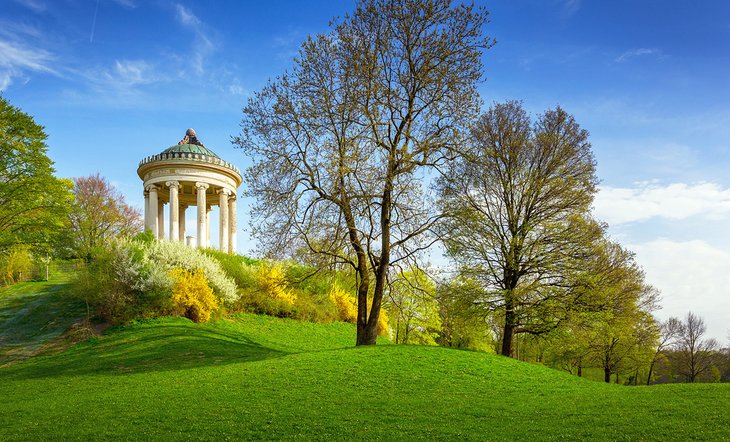
Englischer Garten
Munich’s English Garden is not only the largest city park in Germany – it covers an area of 910 acres – it’s also one of the most beautiful. Naturally arranged groups of trees and plants offer ever-changing vistas, and nine kilometers of winding streams and an artificial lake complete the impression of a natural landscape.
Designed in 1785 as a military garden, the English Garden attracts walkers, joggers, and cyclists to its 78 kilometers of pathways and bridle paths. It’s also a pleasant place to sunbathe and picnic, and you can stop for a snack or drink at the Chinesischen Turm (Chinese Tower), a 25-meter-tall pagoda.
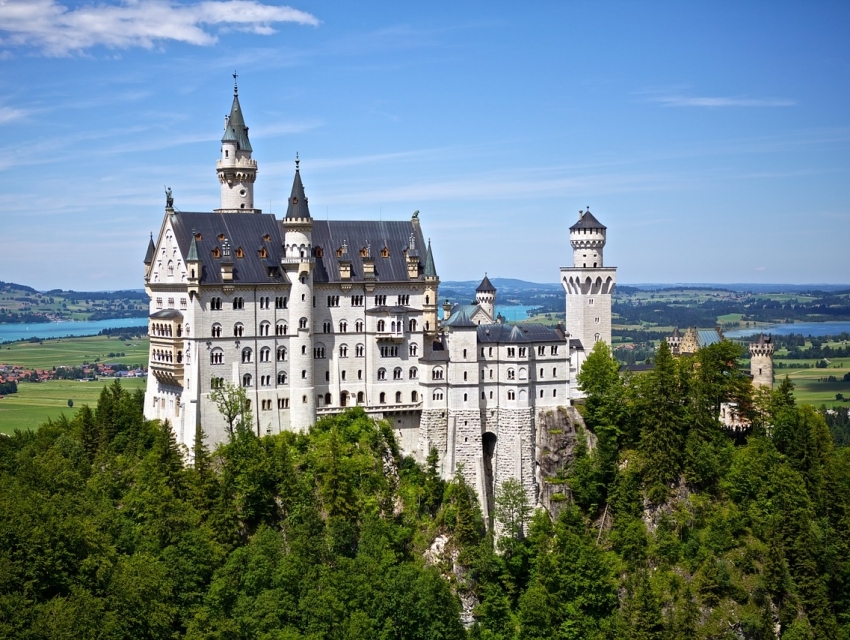
Neuschwanstein, A Fairytale Castle
The castle was built by King Ludwig II of Bavaria, also known as the “Fairytale King”.
If you come to visit this castle, you will be amazed by the extremely beautiful landscape that surrounds it. Also, Neuschwanstein lies very close to the town of Fussen, which is also a popular tourist destination in Germany.
The construction of the Neuschwanstein castle began in 1869, and originally it was projected to last three years. But Ludwig II wanted the castle to be perfect, so the immense building was not finished even at Ludwig’s death in 1886 and it is not completely finished to this day.
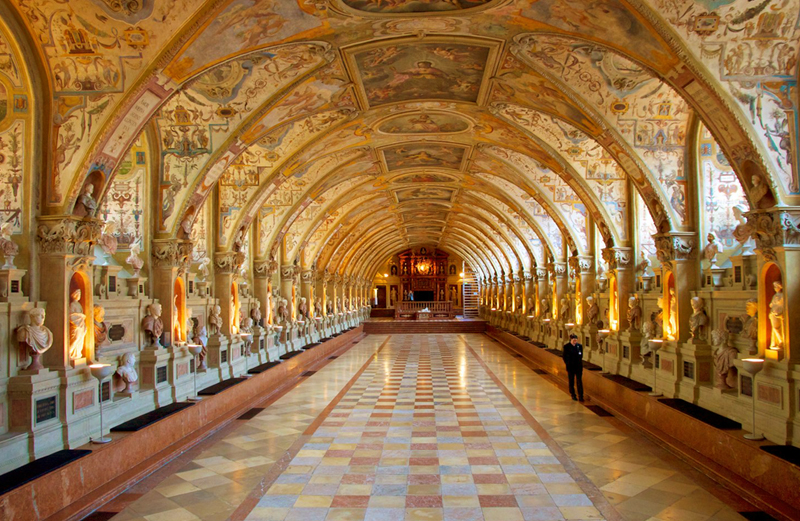
Munich Residenz
The Munich Residenz was home to Bavarian rulers, the Wittelsbachs, for centuries before it was opened to the public in 1920. Its art collections and various architectural styles became symbols of the royal family’s power.
The residence sustained heavy damage in World War II, but has since been restored as much as possible; today, it is considered one of the finest palace museums in Europe. The Wittelsbachs collected fine art and objects for centuries, so visitors will be able to see outstanding collections of porcelain, paintings, silver objects, rare furniture, chandeliers and sculptures.
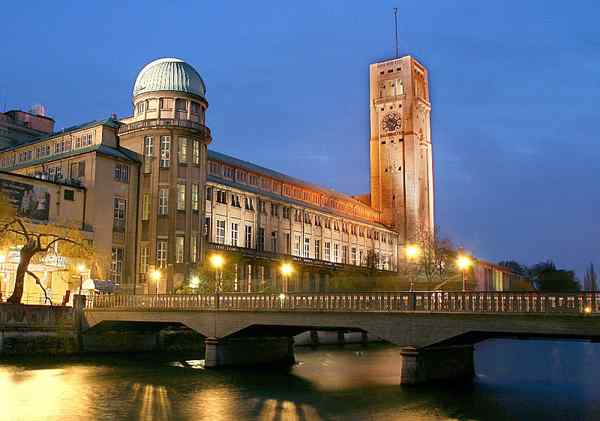
Deutsches Museum
The Deutsches Museum is a world class science and technology museum that appeals to visitors of all ages, even those who profess not to be interested in such subject matter. Visitors can take free guided tours (conducted only in German though) through the museum’s 50 exhibit areas, view demonstrations on subjects ranging from electricity to musical instruments, and participate in a wide variety of hands-on activities.
The museum has a mind-boggling collection of more than 100,000 science- and technology-related objects from the Stone Age to today. The museum is family friendly, with 1,000 activities for kids 3-8 offered in Kids Kingdom.
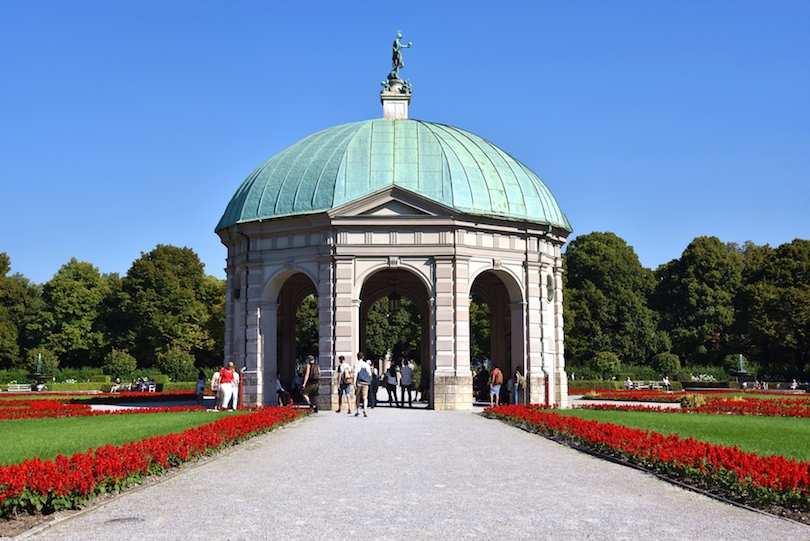
Hofgarten
Located between the famed Residenz and the Englischer Garten is the Hofgarten, a beautiful garden built at the beginning of the 17th century in the style of an Italian Renaissance garden. The Hofgarten is open to the public from dawn to dusk, and it is the perfect spot for a stroll.
Check out the gazebo in the center of the garden, or just admire the beautifully manicured gardens. Many visitors grab some food and enjoy a picnic in the Hofgarten, and there are plenty of benches throughout the area where you can sit, rest and enjoy the view.
